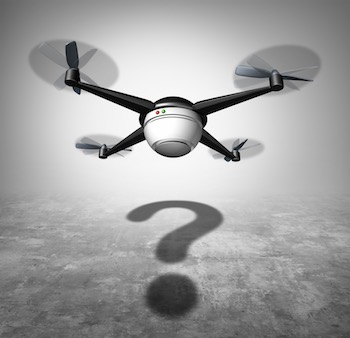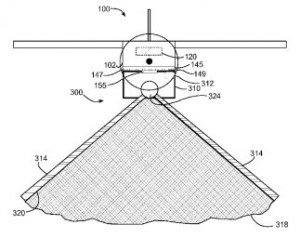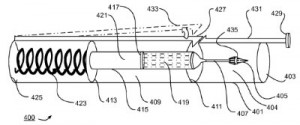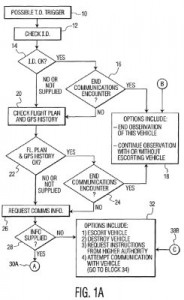 The proliferation of unmanned aerial vehicles (UAVs), more commonly referred to as “drones,” has cluttered airspaces all over the world in a precarious way. For example, in late January, the crew of an American Airlines flight approaching Miami International Airport spotted a drone directly in the plane’s path just a mile or two away from the runway; fortunately the craft landed without incident. Also around the same time, a plane making its final descent into Britain’s Manchester Airport came within 50 feet of a flying drone, the 20th such severe near-miss experienced in that country within a year. These and other security and privacy issues related to drones have prompted some organizations, such as the University of Michigan, to ban the use of drones entirely.
The proliferation of unmanned aerial vehicles (UAVs), more commonly referred to as “drones,” has cluttered airspaces all over the world in a precarious way. For example, in late January, the crew of an American Airlines flight approaching Miami International Airport spotted a drone directly in the plane’s path just a mile or two away from the runway; fortunately the craft landed without incident. Also around the same time, a plane making its final descent into Britain’s Manchester Airport came within 50 feet of a flying drone, the 20th such severe near-miss experienced in that country within a year. These and other security and privacy issues related to drones have prompted some organizations, such as the University of Michigan, to ban the use of drones entirely.
Governments around the globe have also stepped up their regulation of this rapidly expanding sector of consumer tech. On February 19th, the Federal Aviation Administration ended a drone registration program for citizen owners of UAVs. Without registration, UAV owners could face civil penalties up to $27,500 and criminal penalties of up to $250,000, as well as up to three years in jail. Some political commentators have even wondered aloud about the right American property owners have to shoot a drone flying in the airspace above their private property. Elsewhere, in a rather unique effort to crack down against unauthorized drones, police in the Netherlands are training eagles to grab drones from out of the sky.
The tech sector is taking notice. “Simply put, drones are changing everything,” said technology investor and Founder of NT Capital Partners LLC, Navin Thukkaram. He elaborates that “[t]he proliferation of drones and drone technology have the potential to be substantially greater than current market predictions.”
Recent product offerings support Thukkaram’s statements. Several new and established companies are beginning to roll out a variety of new tools that can be deployed to disable drones and cause them to land or otherwise take away their ability to function. For example, property owners can already invest in drone detection and alert systems, which can track a drone’s specific electromagnetic signature. Other innovators are looking into the use of high-energy laser beams to set a drone on fire while in flight as well as radio waves used to disrupt communications and camera equipment.
With so much interest in developing systems for drone disabling and capturing unauthorized drones, it’s not surprising to see patents being issued for related technologies over the past year by the U.S. Patent and Trademark Office. One such patent, U.S. Patent No. 9085362, titled Counter-Unmanned Aerial Vehicle System and Method, generally relates to a UAV for providing counter-UAV measures. An exemplary embodiment of the claimed UAV has a deployable “net-capture” device. The “net-capture” device deploys a net that is configured to provide a large cross-sectional area for intercept and entanglement of a threat UAV caught in the deployed net. The “net-capture” device also has a release mechanism which is configured to detach the deployed net from the UAV when a target is ensnared in the deployed net. Finally, an inflatable frame is contemplated for limiting the damage to the ensnared target. This invention purports to address the growing threat that drones could be used by hostile parties for surveillance or attacks in a way that immobilizes any threats from the dispersion of biological agents.

Another patent directed at drone disabling market is U.S. Patent No. 9175934, titled Auto-Injector Countermeasure for Unmanned Aerial Vehicles. The claimed invention again generally relates to a UAV for providing counter-UAV measures. In one embodiment, a UAV-borne countermeasure for non-destructively disabling and controlling a threat UAV includes a penetrator rod which is propelled toward the threat UAV to pierce the skin of the fuselage of the threat UAV. When the penetrator rod has entered the interior space of the fuselage, a disabling substance is dispensed from the end of the penetrator rod and injected into the interior of the threat UAV. The disabling substance acts to destroy or disable the electrical and/or mechanical systems of the threat UAV. This is another innovation designed to disable a hostile drone without allowing it to deliver any of its payload.

Although American aerospace and defense giant Lockheed Martin (NYSE:LMT) appears to maintain a leading position in this field, smaller inventors are also active in this field, as is evidenced by the issue of U.S. Patent No. 8788118, titled Systems and Methods for Detecting and Managing the Unauthorized Use of an Unmanned Aircraft. The claims generally relate to methods for policing and managing the operation of a target UAV through use a unique identifier that, in at least one embodiment, is associated with the target UAV at the time of manufacture. This unique identifier allows an appropriate authority, such as the police, to transmit an identification request to the target UAV, or to a person controlling the target UAV, and enables such authority to take defensive action if appropriate. The defensive action could include such options as dispatching another UAV to intercept the target UAV, shooting down the target UAV, or initiating a self-destruct of the target UAV. This technology, invented by Jeffrey A. Matos of New Rochelle, NY, is specifically designed to address issues related to the usurpation of UAV control by an unauthorized third party or the ill-intentioned use of unmanned aircraft.


![[IPWatchdog Logo]](https://ipwatchdog.com/wp-content/themes/IPWatchdog%20-%202023/assets/images/temp/logo-small@2x.png)

![[Advertisement]](https://ipwatchdog.com/wp-content/uploads/2024/04/Patent-Litigation-Masters-2024-sidebar-early-bird-ends-Apr-21-last-chance-700x500-1.jpg)

![[Advertisement]](https://ipwatchdog.com/wp-content/uploads/2021/12/WEBINAR-336-x-280-px.png)
![[Advertisement]](https://ipwatchdog.com/wp-content/uploads/2021/12/2021-Patent-Practice-on-Demand-recorded-Feb-2021-336-x-280.jpg)
![[Advertisement]](https://ipwatchdog.com/wp-content/uploads/2021/12/Ad-4-The-Invent-Patent-System™.png)







Join the Discussion
3 comments so far.
Ternary
April 7, 2016 09:33 amThe interesting aspect is that the independent inventor of mentioned US 8788118 in this article started filing patent applications on this and related matters at least in 2001. Clearly, the independent inventor recognized that remote control of aircraft would be useful and was required. This should and could have been recognized by manufacturers of drones and drone systems. For whatever reasons, the independent inventor (presumably as an NPE) was smarter, more alert and more dedicated and committed to do this particular invention and to file the patent application on this invention than the manufacturers were. He is clearly not a Johnny-come-lately to this market segment (and even that should not matter). There is and should be no fundamental difference between the independent inventor being an NPE and potential manufacturers who may infringe his patent and were not clever enough to do the invention at that early time.
In actuality, the inventor may already be engaged in licensing deals. And that is exactly how the patent system should work. Inventors create new inventions and others who want the technology either infringe (and should pay) or develop new technology that is better and circumvents. The independent inventor has moved the technology forward.
It is all very fundamental. But I feel that in the current atmosphere it is required to keep reminding what independent inventors do and why their efforts are valuable.
George Nicolae
April 6, 2016 02:58 pmPlanes shall have a device to protect their path by a laser gun or radio wave to disrupt communication UAV with its flight conductor, or a kind of EMI device to clean the area and avoid collision planes with UAV….for safety reasons of the planes…
Charles Ankner
April 6, 2016 09:49 amBeing an ancient electronic warfare troop, I was just waiting for the “private jammer” to be patented. Can’t wait for the litigations…
https://www.linkedin.com/pulse/what-did-you-do-war-daddy-vol-i-charles-ankner?trk=mp-reader-card